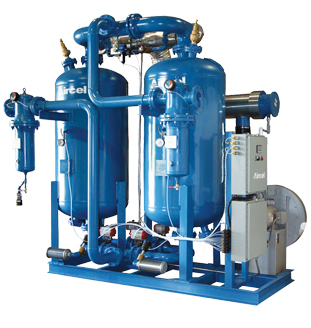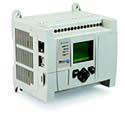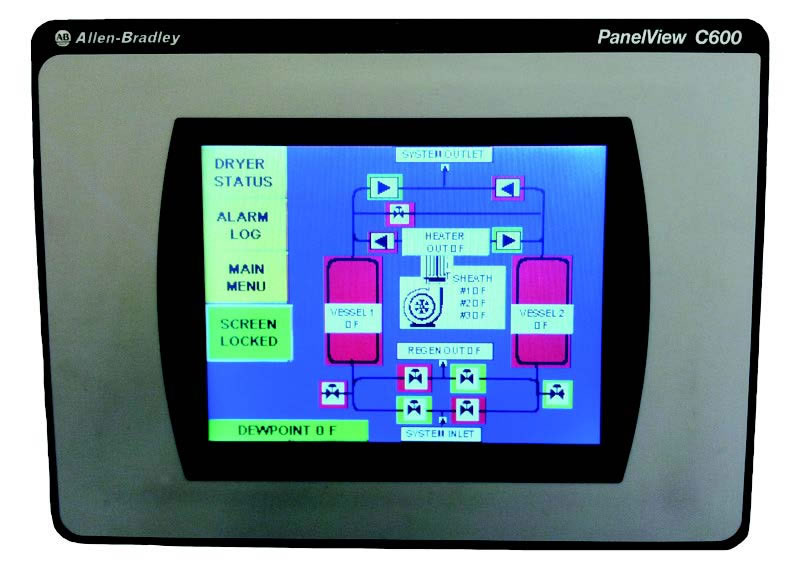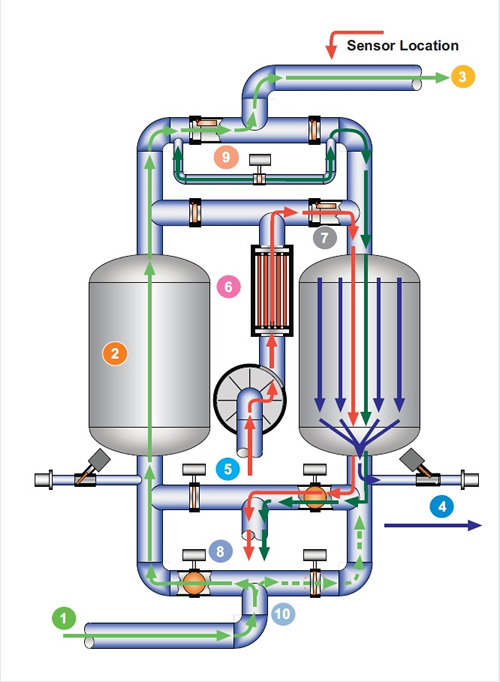Download Brochure Request Quote
ABP Series Heated Blower Purge – Regenerative Desiccant Dryers
Click Here for Altec Air Single-Tower Blower Purge Dryer Page

The Aircel ABP Series (800 – 15,000 SCFM), which replaces the legacy HRE Series, is Aircel’s new blower purge heat reactivated dual tower regenerative air dryer. This new design comes standard with Energy Management System (EMS) for solid peace-of-mind energy savings and consistent operation. This blower purge dryer system is controlled by an Allen Bradley PLC and a 6” LCD Color Touch Screen.
The standard Energy Management System (EMS) control incorporates an integral air outlet dew point sensor to continually monitor the outlet moisture content and to display on the system color touch screen. The EMS control extends the drying time if the outlet dew point is below a preset adjustable set point saving a tremendous amount of energy, valve wear and tear (less switching) during low loading conditions. Energy saving is achieved since the overall regeneration time and dry air cooling time is reduced. The EMS control also provides an Outlet High Humidity Alarm.
Why is the ABP Series different?
The ABP Series uses a high-efficiency blower to take in ambient air required during the heat regeneration cycle to desorb moisture from the desiccant, no compressed air is used during this phase.
Dry compressed air is used during the dry air cooling regeneration period for reduced heat and dew point spike at tower switchover. This amounts to an average process air use of 2% of the rated capacity of the dryer.
Aircel’s unique parallel cooling mode further reduces the heat and dew point spike prior to tower switchover. During the parallel cooling mode both inlet valves are open for a 10 minute period and divert half-load to each tower further cooling the previously regenerated desiccant bed with a larger volume of air.
Controls & Energy Management System

The Aircel ABP Series utilizes the Allen Bradley MicroLogix 1100E PLC Controller for automatic control and flexible programming. This addition sets a higher standard of configurations and capabilities that exceed other blower purge desiccant dryers in the market. With built-in Ethernet connection, you can access, monitor and program this purge dryer from any available connection. An embedded web server is also included to configure controller data easily on a web page.
Additional Features & Benefits of the ABP Blower Purge Dryer Series
Standard On-Screen Features
- Main Control Menu – Provides easy road map for on-screen navigation

- Flow Diagram – Visual P&ID with real time data: active objects, temp, pressure, and dew point readout
- Interactive Service Menu – User step-by-step service screens
- Operation Screens – Step-by-step real time process data
- Alarm Banner – Provides immediate pop-up display
- History Log – Captures triggered alarm with time/date stamp
- Alarm Status Screen – Indicates all alarm states
- Settings Screens – Provides user access to various control set points
- Control Push Buttons – Touch system control, EMS Off/On
- Dryer Status – Days of operation, hours of energy savings, system timers and mode of operation
Optional Controls (consult factory)
- Digital Flow Meter
- Valve Inlet Position Switches
- Valve Regeneration Outlet Position Switches
- Condensate Drain Alarm
- Inlet Temperature
- Vessel Bed Thermocouple Temperature (°F)
- Filter Differential Pressure Alarm
How it Works
- Pre-filtered wet compressed air enters the bottom of the on-line vessel.

- Compressed air passes upward through the desiccant bed; moisture is removed, lowering the dew point to -40º F.
- Dry compressed air exits the top of the vessel and flows downstream to the after-filter, monitored constantly via standard dew point sensor. This EMS feature extends the drying period until the target dew point occurs. This greatly reducing energy costs.
- Prior to regeneration, saturated online vessel goes offline and depressurizes to ambient through an angle seat valve and muffler.
- After the off-line vessel has depressurized, a blower draws in ambient air for regeneration.
- This air passes thru an immersion heater, check valve, and enters top of regenerating vessel.
- As the hot ambient air passes downward through the desiccant bed, water molecules are released from the surface of the desiccant.
- Hot regeneration air passes through a butterfly valve and exhausts to atmosphere. Heating phase may terminate early due to low load conditions; this energy savings is automatically passed onto the customer and allows for earlier cooling process to begin.
- At the end of the heating phase of the cycle, the desiccant bed, although regenerated, remains hot. The temperature of the bed must be lowered to reduce dew point and temperature spikes in the process air when the bed goes back on line. This is accomplished by allowing a slipstream of dry process air, controlled by an automatic valve, to flow from the on-line vessel into the off-line vessel. This slipstream is also used to repressurize the offline vessel after it has been cooled placing the unit into standby. The EMS control continues to save by extending the drying period through outlet dew point monitoring until the target dew point is reached.
- Unique to the Aircel ABP is our parallel running period 10 minutes after vessel switchover. During this period, the incoming flow of wet compressed air is directed through both vessels. This step further reduces the dew point and temperature spikes associated with heated dryers. This parallel cooling mode requires no purge air.
ABP Series Standard Features & Benefits
- Desiccant Media & Fill Port for easy desiccant replacement of premium grade desiccant
- Activated Alumina (3/16”) with high moisture capacity
- High Performance Butterfly Valve with long-life consistent operation designed to reduce seal wear and leakage
- Regulated & Filtered Pilot Air ensures reliable pneumatic control operation
- Outlet Dew Point Sensor
- Standard digital readout, adjustable alarms and Energy Management System control
- Aircel Programmable Controller (APC) with Standard EMS for Energy Efficient Electronic Purge Reduction
- NEMA 4 Steel Enclosure
- Outlet Dew Point Reading
- Dryer Operation Status
- MicroLogix 1100E PLC Controller
- 6” LCD Color Touch Screen
- UL/cUL-508a Control Assembly
- Thermal Relief Valves ASME UV stamped set @ 150 psi
- ASME Carbon Steel Vessels 150 psi @ 450°F
- Tower Pressure Gauges large easy-to-read 3.5” display
- Purge Exhaust Mufflers For low noise with built-in safety relief valve
- Rugged Steel Frame mounted on durable platform
- Pilot Solenoid highly reliable and long-lasting
- Angle-Body Purge Exhaust Valve
- Durable 10 year longevity
- Remote start/stop control
- Purge air consumption reduced down to an average of 2%
- Fail-safe design: failure of power causes the purge exhaust valves to close, drying air flow is uninterrupted
- Stainless steel desiccant supports and air diffusers to prevent channeling
- Counter-current regeneration, upflow drying, and downflow depressurization
- Ambient air used for heat regeneration, no compressed air used
- 10 minutes of parallel flow with both desiccant chambers online at switch-over to reduce the temperature and moisture spikes
Optional Equipment
- Pre-piped & mounted Package “B” pre & after filter
- Low ambient temperature with heated pre-filter drain
- 3-valve dryer block and bypass package
- Special filtration and valving packages
- -100°F pressure dew point for critical applications
- Class I, Division II, Group C & D, Z-Purge Enclosure
- Vessel insulation to optimize efficiency of regeneration
- Aircel’s Zero Purge AZP Series air dryer